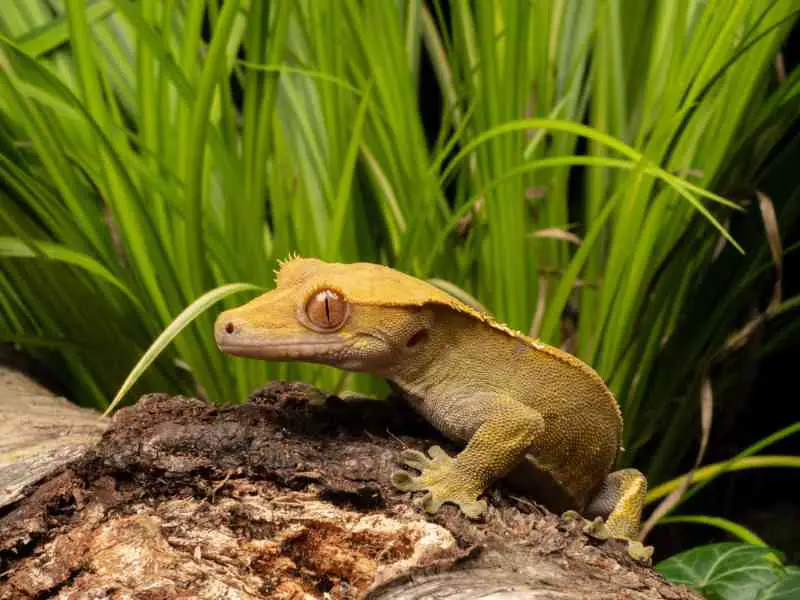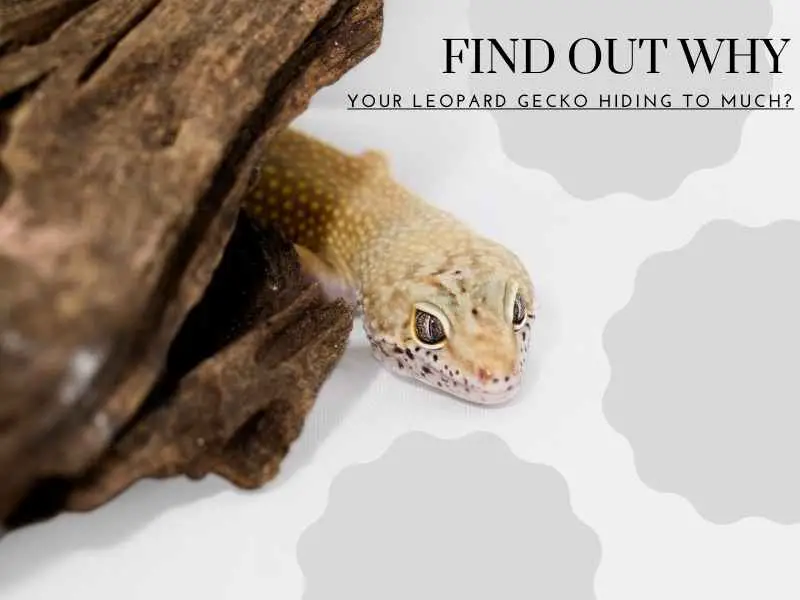African Fat-Tailed vs Leopard Gecko: 6 Biggest Differences

Geckos are adorable and are known for being fairly low maintenance. Because of this, they make great pets. But there are many types of gecko species, each with subtle differences. Prospective owners must understand these distinctions. With this in mind, let’s look at how the African Fat-Tailed Gecko and Leopard Gecko compare.
Contents
African Fat Tail VS Leopard Gecko
At first glance, these two types of geckos can seem very similar. But if you dig a little deeper, you’ll find that there are some significant differences between the two. Let’s look at some of the most important elements that set these apart.
Size and Weight
One of the most obvious differences is the size and weight of these animals. It should be noted that there are plenty of morphs of these geckos, but there are a few generalities that we can draw.
First, African Fat-Tailed Geckos tend to be smaller. They can start at six inches, but many will be between eight to nine inches long. On the other hand, a Leopard gecko will be between eight to 12 inches long. However, you might find some giant morphs of the Leopard gecko.
The additional size means that the Leopard Gecko tends to be heavier. They can weigh between 40 to 100 grams. However, an African Fat-Tailed Gecko will only weigh between 45 to 75 grams.
We can also compare the way the body shape, in particular the way the tail appears. As the name would suggest, the tail of the African Fat-Tailed gecko is wider. It is also shorter than the Leopard gecko.
There are a few other differences, including:
Body Shape
We can also compare the way the body shape, in particular the way the tail appears. As the name would suggest, the tail of the African Fat-Tailed gecko is wider. It is also shorter than the Leopard gecko.
There are a few other differences, including:
- Snout size AFTG will have a shorter snout than Leopard Geckos
- Coloring. Each morph of both geckos will have a slightly different color pattern.
- The number of colors. Leopard Geckos have been bred for longer. Because of this, there are more morphs of this variety, with a wider mix of colors to choose from.
- Claws. Both these species have claws. These are designed to make it easier for them to get through the desert. Most other geckos have feet that have been designed for climbing, with sticky pads.
Cost
This market is largely driven by the whims of supply and demand. The Leopard Gecko is more popular. But breeders focus more their attention on producing this type of gecko. This means that they will be easier to purchase. Because of this, they will be less expensive than the more obscure African Fat-Tailed Gecko.
Origins
There are a few parts of the world where the Leopard Gecko can be found. Most commonly they will be found in parts of Asia and the Middle East. Some of the countries with the highest natural population are:
- North India
- Pakistan
- Iran
- Afghanistan
They tend to perform best in desert environments. On the other hand, the African Fat-Tailed Gecko will come from Africa.
Maturity Age
It can take a little longer for the Leopard Gecko to reach sexual maturity. This is because of their larger size. Generally, an African Fat-Tailed Gecko will reach maturity after eight months. On the other hand, you might need to wait for up to 24 months before the Leopard Gecko is ready to start breeding.
Popularity
Finally, it’s worth remembering that the Leopard Gecko is the most popular variety. Because of this, breeders will be able to dedicate more time and money to experiment with this species, trying to create new morphs. This also benefits the consumer, as there is more variety to choose from.
Similarities
Temperament
If you are thinking about getting these animals as a pet, it’s important to consider their temperament. The good news is that both of these species are fairly docile, so you often won’t have too many problems.
However, the African Fat-Tailed Geckos are a little shyer at first. This can manifest itself in a range of ways. They may act aggressively as you are reaching into the cage. This might be because they think that you are threatening them. However, they will only bite in extreme circumstances. But they will display a little more territorial behavior when compared with Leopard Geckos
Diet
Both of these Geckos are insectivores. Some of the most popular food choices to explore include:
- Crickets
- Locusts
- Mealworm
- Waxworms
Usually, these geckos won’t be interested in fruits.
Can They Be Housed Together?
While these are both relatively docile species, it’s still not a good idea to put them together. The biggest risk is that they will act territorially. This is most common if you are putting two males in the same enclosure. This behavior can kill one or both of these geckos.
Another potential issue is that they will have slightly different enclosure requirements. You might also need to establish a customized feeding plan for each gecko.
Housing Requirement
While you won’t be able to keep them together you still want to make sure that they have the right environment to thrive in. Here are some of the elements you should be adding to the enclosure. These are:
- Tank size. Both of these species will require the owner to have a minimum tank size of 10 gallons, though a 20-gallon one would be best. You can house them with members of the same species. If you are doing this, you will need an additional gallon of space for each gecko.
- Heating. This is an important feature in any enclosure. Both of these species live in the desert. You should aim to keep the temperature to around 90 degrees Fahrenheit, where they will be basking. This heat can be applied with a heating pad.
- Add a cool side to the enclosure. Both of these species use a process known as thermoregulation to control their body heat. Because of this, you will need to make sure that you give them a place to cool off if they get too hot. This area will usually need to be around 70 degrees Fahrenheit.
Though there are many similarities between their housing conditions, there are some critical differences. One of the best examples of this is looking at the humidity levels. Leopard Geckos generally need a dry enclosure. But they will need a more humid area so they can shed their skin.
On the other hand, African Fat-Tailed Geckos will need humidity all the time. If they don’t get it, they can become sick.
Can They Breed Together?
Looking at these types of geckos, it’s easy to see plenty of similarities. This has led a lot of people to wonder if they would be sexually compatible. However, this is a complex area. Some breeders have tried to make crosses of these species. But this often ends in bad results.
Remember, though these species may look and act similar, they are from two different climates. They each have a different genus. The Leopard Gecko is Eublepharis while the African Fat-Gecko is a Hemitheconyx.
The crossbreeds that are produced often won’t last long. Most of them won’t last for more than a few weeks.
Final Thoughts
At first glance, the African Fat-Tailed Gecko and Leopard Gecko look similar. But this isn’t the case. There are several key differences, like their origins, shape, and popularity. It’s best to decide which one is best for your needs. Unless you have a lot of space and money, choose the variety that you like the best and stick to that one.




